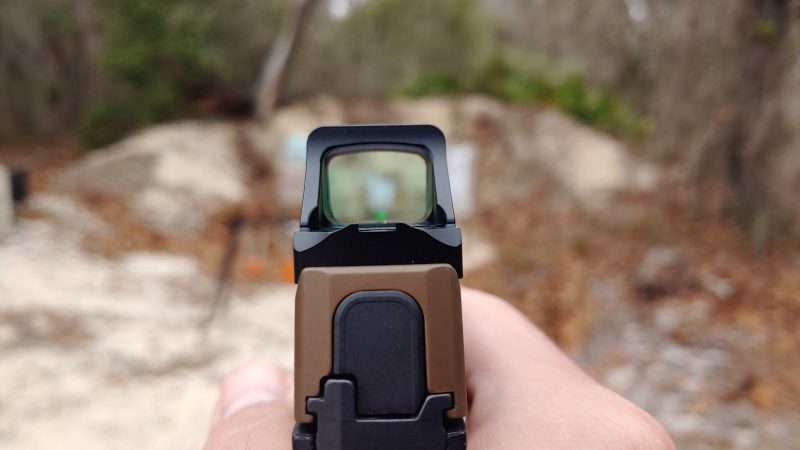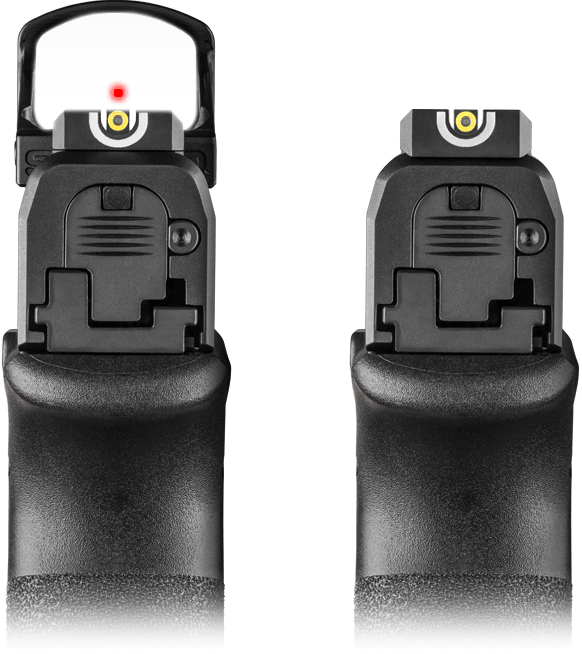The debate between traditional standard gun sights and modern optics, such as red dots, is a constant source of contention in the world of firearms. Both options have advantages and disadvantages, catering to different shooting preferences, scenarios, and skill levels. To determine which is better, one must weigh the pros and cons of each system, considering factors like accuracy, speed, versatility, and cost.
Standard Gun Sights

Pros
- Simplicity and Reliability: Standard iron sights have been the staple of firearms for centuries due to their durability and minimalistic design. They are not reliant on batteries or electronic components, making them less susceptible to failure in adverse conditions.
- Training and Skill Development: Using standard sights requires a higher degree of marksmanship skill. This can be advantageous for those seeking to hone their fundamental shooting abilities, as it encourages a deeper understanding of sight alignment and trigger control.
- Cost-Effectiveness: Standard sights come pre-installed on most firearms, eliminating the need for additional purchases. This can be particularly appealing to those on a budget or newcomers to shooting sports.
Cons
- Learning Curve: Achieving consistent accuracy with standard sights demands a steep learning curve. Novices often struggle with aligning front and rear sights, leading to prolonged training periods before achieving proficiency.
- Speed and Target Acquisition: Standard sights can be slower to acquire targets in dynamic scenarios. Aligning multiple components for accurate shooting takes longer than with a single focal point provided by a red dot optic.
- Limited Performance in Low-Light Conditions: Standard sights suffer due to reduced visibility in low-light situations. This can hinder accurate shooting during dawn, dusk, or indoor environments with poor lighting.
Red Dot Optics

Pros
- Rapid Target Acquisition: Red dot optics offer a single focus point, eliminating the need for precise alignment of front and rear sights. This speeds up target acquisition, making them ideal for self-defense, competition shooting, and tactical scenarios.
- Enhanced Accuracy: With a red dot, shooters can maintain focus on the target while superimposing the dot, leading to improved accuracy, especially in high-stress situations. This can be particularly beneficial for fast-paced shooting events.
- Versatility in Shooting Positions: Red dot optics allow shooters to maintain accurate aim from various shooting positions, such as awkward angles or unconventional stances. This versatility is invaluable in dynamic environments.
- Low-Light Performance: Many red dot sights feature adjustable brightness levels, making them highly effective in low-light conditions. The illuminated dot remains visible in situations where standard sights may fail.
Cons
- Battery Dependence: Red dot optics are electronic devices requiring batteries. Depending on the model and usage, batteries may need to be replaced frequently, causing the sight to become inoperable at critical moments.
- Learning Curve for New Shooters: While red dots simplify target acquisition, they still demand training to transition from standard sights effectively. New shooters might initially need help aligning the dot and maintaining a proper sight picture.
- Cost: Red dot optics are generally more expensive than traditional iron sights. This initial investment includes optics, mounts, and potential ongoing battery costs.
Parting Shots
In the debate between standard gun sights and red dot optics, there is no definitive “better” option. The choice largely depends on the shooter’s preferences, intended use, and skill level. Traditional iron sights offer simplicity, reliability, and skill development but may be slower and less effective in low-light scenarios. On the other hand, red dot optics excel in rapid target acquisition, accuracy, and versatility but require batteries and a learning curve, particularly for new shooters.
Ultimately, the decision boils down to the shooter’s priorities. For individuals seeking to master the art of marksmanship, standard sights might be the preferred choice. However, those prioritizing speed, accuracy, and adaptability in dynamic scenarios will likely gravitate toward red dot optics. Many experienced shooters find that having both options available in their arsenal allows them to adapt to various shooting contexts, striking a balance between tradition and modern innovation. As technology evolves, red dot optics may become more user-friendly and affordable, potentially swaying the balance in their favor. Until then, the ongoing debate remains a testament to the diverse needs and preferences of the firearms community.
ABOUT THE AUTHOR:

David Workman is an avid gun guy and a contributing writer to several major gun publications. As an NRA-certified instructor, David trains new shooters on basic handgun skills and CCW requirements and is a strong advocate for training as much as possible. “Real-life shootouts don’t happen at a box range.”
![]() You may also enjoy these popular articles:
You may also enjoy these popular articles:




©MTC Holsters, LLC and CrossBreed Holsters Blog, 2023.
Unauthorized use and/or duplication of this material without express and written permission from this site’s author and/or owner is strictly prohibited. Excerpts and links may be used, provided that full and clear credit is given to David Workman and the CrossBreed Blog with appropriate and specific direction to the original content.

